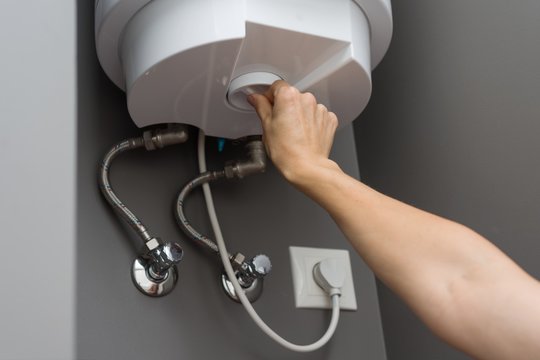Best Practices for Maintaining Your Home's Hot Water SystemWays to Extend the Life of Your Home's Hot Water System By Maintenance
Best Practices for Maintaining Your Home's Hot Water SystemWays to Extend the Life of Your Home's Hot Water System By Maintenance
Blog Article
The content directly below in relation to How to Maintain Your Water Heater & Prolong its Life is definitely motivating. Don't overlook it.

Hot water is crucial for everyday convenience, whether it's for a rejuvenating shower or cleaning recipes. To ensure your hot water system runs effectively and lasts longer, routine maintenance is crucial. This short article supplies sensible suggestions and understandings on how to preserve your home's warm water system to avoid disruptions and pricey repairs.
Intro
Keeping your home's hot water system may appear overwhelming, however with a few easy actions, you can ensure it operates smoothly for several years to come. This overview covers everything from comprehending your warm water system to DIY upkeep tips and understanding when to call in expert assistance.
Importance of Maintaining Your Hot Water System
Regular maintenance not just extends the life expectancy of your hot water system yet also ensures it runs efficiently. Overlooking upkeep can lead to reduced effectiveness, greater power bills, and even early failing of the system.
Signs Your Hot Water System Requirements Maintenance
Understanding when your warm water system requires attention can stop major concerns. Keep an eye out for signs such as inconsistent water temperature, odd sounds from the heating system, or corroded water.
Understanding Your Hot Water System
Before diving right into upkeep jobs, it's useful to comprehend the standard parts of your hot water system. Generally, this includes the hot water heater itself, pipelines, anode poles, and temperature level controls.
Monthly Upkeep Tasks
Normal monthly checks can help catch minor problems prior to they intensify.
Purging the Hot Water Heater
Purging your hot water heater gets rid of debris build-up, boosting performance and lengthening its life.
Monitoring and Replacing Anode Rods
Anode rods prevent corrosion inside the tank. Inspecting and replacing them when worn out is essential.
Inspecting and Adjusting Temperature Level Setups
Readjusting the temperature level setups makes sure ideal efficiency and security.
DIY Tips for Maintenance
You can carry out several maintenance tasks on your own to maintain your warm water system in leading condition.
Checking for Leaks
Frequently examine pipes and links for leakages, as these can cause water damages and higher bills.
Testing Stress Relief Valves
Evaluating the pressure safety valve guarantees it works properly and avoids excessive stress build-up.
Protecting Pipelines
Insulating hot water pipelines decreases warmth loss and can conserve energy.
When to Call a Specialist
While DIY upkeep is helpful, some issues call for expert know-how.
Complex Concerns Needing Expert Help
Instances include major leakages, electrical problems, or if your hot water heater is regularly underperforming.
Regular Expert Maintenance Benefits
Specialist upkeep can consist of complete evaluations, tune-ups, and ensuring conformity with safety criteria.
Final thought
Regular upkeep of your home's warm water system is important for performance, long life, and price savings. By complying with these tips and recognizing when to seek professional help, you can make sure a dependable supply of warm water without unforeseen disturbances.
How to Maintain an Instant Hot Water Heater
Before tinkering with your hot water heater, make sure that it’s not powered on. You also have to turn off the main circuit breaker and shut off the main gas line to prevent accidents. Also turn off the water valves connected to your unit to prevent water from flowing into and out of the appliance. 2. When you’re done, you have to detach the purge valves’ caps. These look like the letter “T” and are situated on either side of the water valves. Doing so will release any pressure that has accumulated inside the valves while at the same time avoid hot water from shooting out and burning your skin. 3. When the purge valves’ caps are removed, you have to connect your hosing lines to the valves. Your unit should have come with three hoses but if it didn’t, you can purchase these things from any hardware or home repair shops. You can also get them from retail stores that sell water heating systems. Read the user’s manual and follow it to complete this task properly. When the hosing lines are connected, open the purge port’s valves. 4. You should never use harsh chemical cleaners or solutions when cleaning your unit. Make use of white vinegar instead. It should be undiluted and you’ll probably use about 2 gallons. 5. Now flush your water heater. This task should probably take about 40 minutes. We can’t give you specific directions for this because the procedure is carried out depending on the type, model and brand of your heater. With that being said, refer to the user’s manual. 6. When you’re done draining the unit, you have to turn off the purge port valves again. Remove the hosing lines that you earlier installed on each of the water valves. Put the valve caps (purge port) back in their respective places and be very careful so as not to damage the rubber discs that are found inside these caps. 7. Now that everything’s back in place, check your user’s manual again to find out how to reactivate your water heating system. 8. Once it is working, turn one of your hot water faucets on just to let air pass through the heater’s water supply pipes. Leave the tap on until water flows smoothly out of it. https://www.orrplumbing.com/blog/2014/september/how-to-maintain-an-instant-hot-water-heater/

I ran across that blog posting on Tips For Maintaining Your Hot Water Heater when doing research the search engines. Loved our content? Please share it. Let someone else discover it. Thanks so much for your time invested reading it.
At This Website Report this page